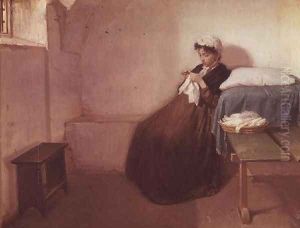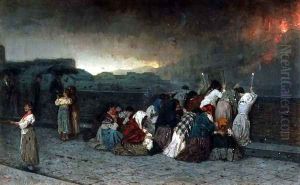Giovacchino Toma Paintings
Giovacchino Toma was an Italian painter, born in Galatina, a town in the province of Lecce, on December 27, 1836. He is known for his detailed historical and genre paintings, which often reflect themes of the Romantic movement. Toma displayed an early talent for art, and his potential was recognized by the local nobility, who sponsored his education.
He began his studies at the Academy of Fine Arts in Naples, where he was taught by some of the most prominent artists of the time, such as Gabriele Smargiassi and Giuseppe Mancinelli. Toma was heavily influenced by the works of Domenico Morelli, a leading figure of the Italian Romantic movement, and Filippo Palizzi, known for his realism and attention to naturalistic detail.
Throughout his career, Toma developed a style characterized by emotional intensity, dramatic lighting, and meticulous detail. He was particularly interested in capturing moments of everyday life, as well as historical scenes, often portraying them with a sense of melancholy or moral reflection. His works were widely appreciated for their narrative quality and their capacity to evoke empathy.
Toma's paintings were exhibited in various important exhibitions, including the Promotrice Napoletana, where he won numerous awards. His success allowed him to become a professor at the Academy of Fine Arts in Naples, a position he held until his death. Giovacchino Toma passed away on September 5, 1891, in Naples, leaving behind a body of work that continues to be celebrated for its contribution to 19th-century Italian art.
Toma's legacy endures in the collections of various museums and institutions, and his work is recognized for its historical value as well as its artistic merit. His depictions of southern Italian life and culture during the 19th century offer invaluable insights into the period's social and historical context.

